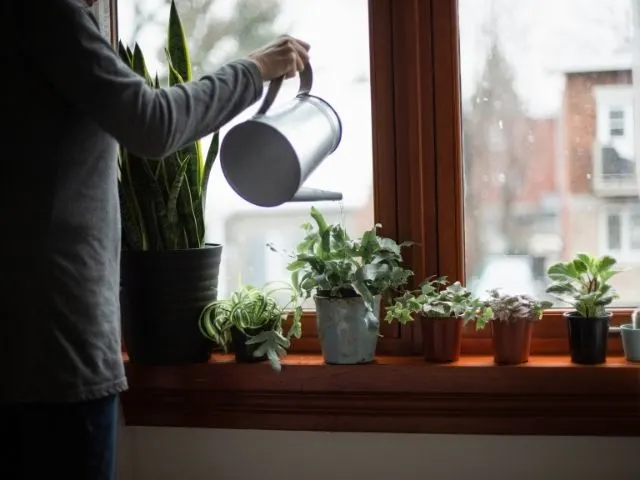As a garden designer who also loves making homemade gifts, I often propagate my houseplants. Giving away or swapping the plant babies is a rewarding project—and if you take up the same hobby, you can give yourself a pat on the back for practicing environmentalism and frugality.
Depending on the plant, you’ll use one of several propagation methods—from rooting a leaf to taking a stem cutting to coaxing new roots to grow in water. Whatever method you choose, multiplying your houseplants will yield satisfying results (and thoughtful gifts for anyone in need of a little more indoor green love).
Please keep reading to learn more about the ways to propagate houseplants.
Water propagation
Rooting in water is the most common approach for houseplants and the best place to start if you’re a propagation beginner. You’ll first need a plant such as a pothos with vine-like stems, ones that have littles nodes—near where the leaf meets the stem—which is where the new roots will shoot down from. Choose a healthy stem, and using sharp shears, cut just below the node and place the stem in a glass jar with room-temperature water. Place the cutting(s) in a spot that receives bright light but not direct sun. Continue checking for new root growth (easy and fun to see through glass jars) and keep the water fresh. When the plant has roots at least two inches long, it’s ready to be transferred to a pot and planted with potting mix.
Good plants for water propagation include pothos, philodendrons, inch plants, monsteras and fiddle leaf figs.
Soil Propagation
Cuttings from plants with woody stems often take better to rooting in soil. Choose a healthy stem on a mother plant and use a sharp, sterile knife to make a clean cut at a 45-degree angle. The cutting should include the tip of the stem and at least two or three sets of leaves. Take the angled end of the cutting and place into a small pot with soil. Keep the soil moist (but not wet) and wait for roots to grow over weeks or a few months (depending on the plant). To identify whether roots have formed or not, pull lightly on the plants. If they pop right out, they’re not fully rooted yet. If you feel some resistance, they’re rooted and ready.
Good plants for soil propagation include spider plants, snake plants, jade, succulents and dragon trees (dracaena marginata).
Root Division
This method is really as simple as it sounds—it involves dividing a mature plant with a large root system into smaller pieces or sections while keeping its existing roots intact. This is a great way to expand your collection if your plant is outgrowing its pot. Some plants, such as aloe or pileas, will shoot up small baby offsets or “pups” at the base of the plant that can be carefully removed and planted directly into soil.
To divide, first pull the plant out of its pot so that all of its roots are exposed. Gently tease and untangle the roots to create separate plants, using a sharp knife or shears to split through tough roots if you aren’t able to pull apart by hand. Repot each plant in separate pots and watch as they become well established.
Good plants to propagate with root division include peace lilies, ZZ plants, pileas (Chinese money plant) and aloe.














